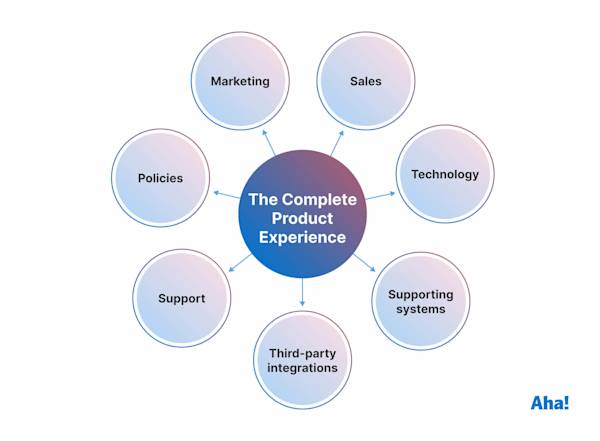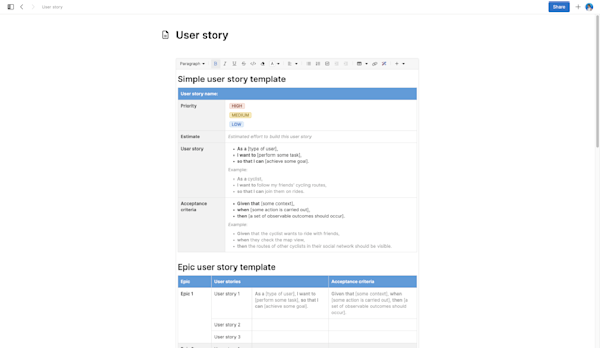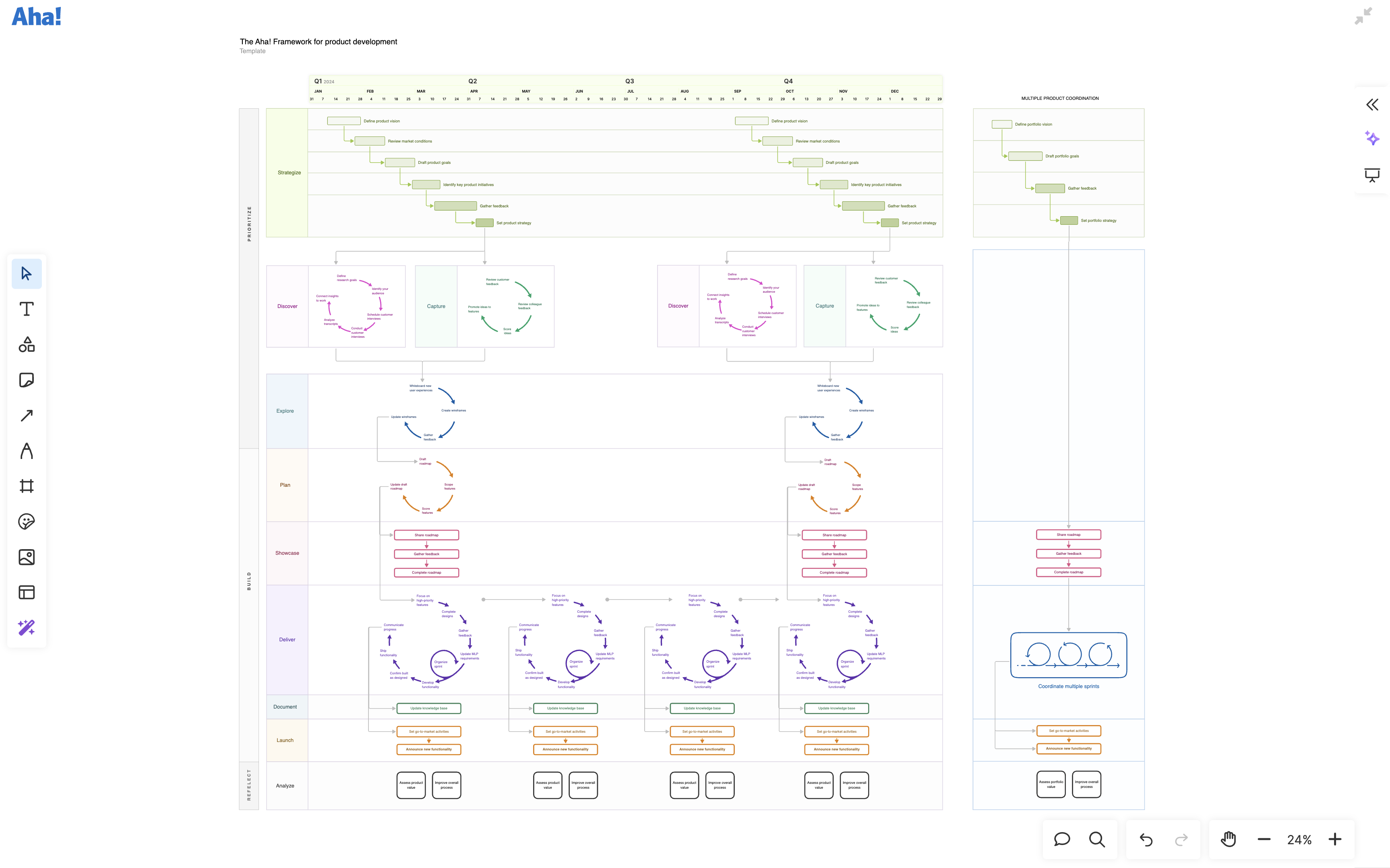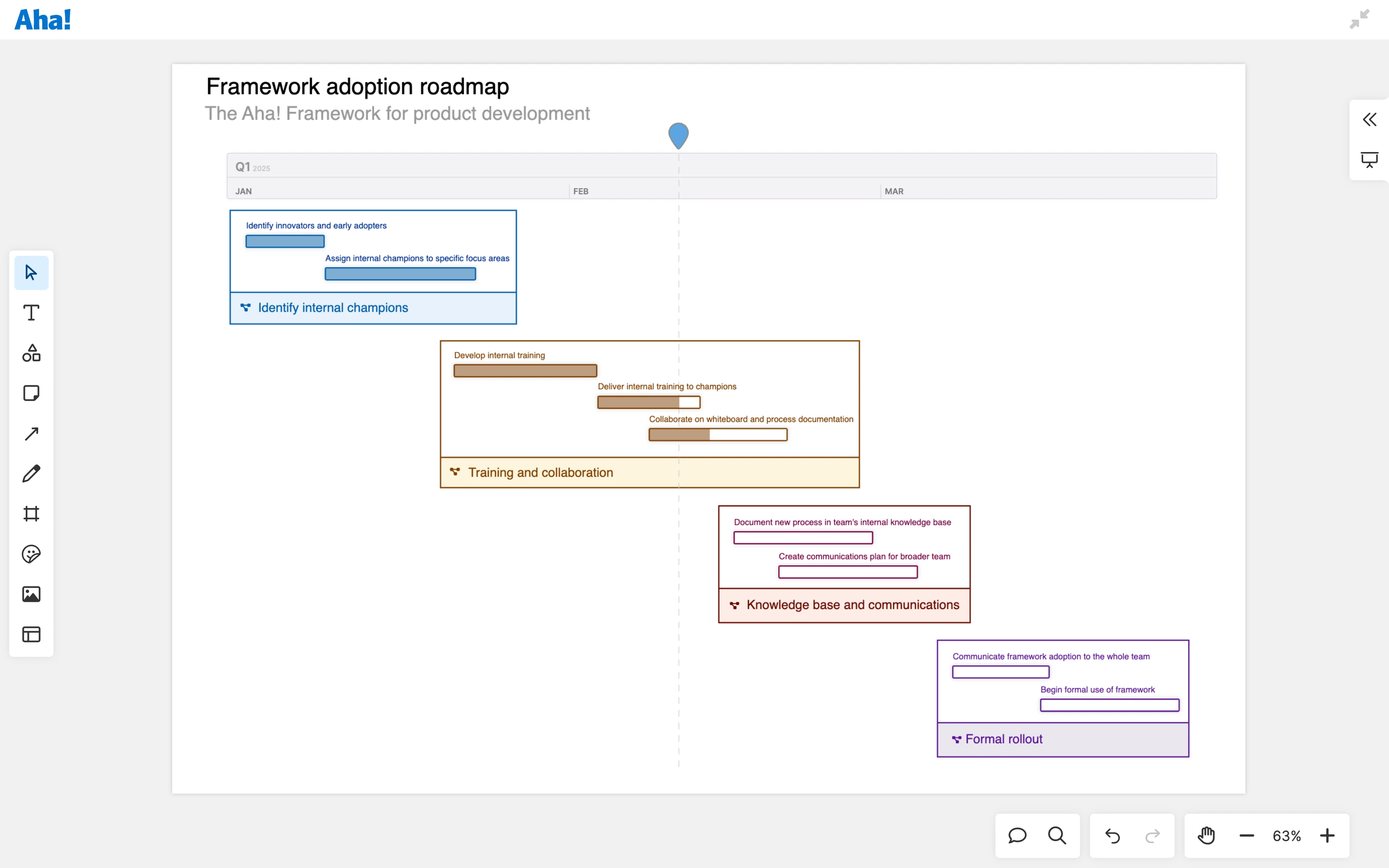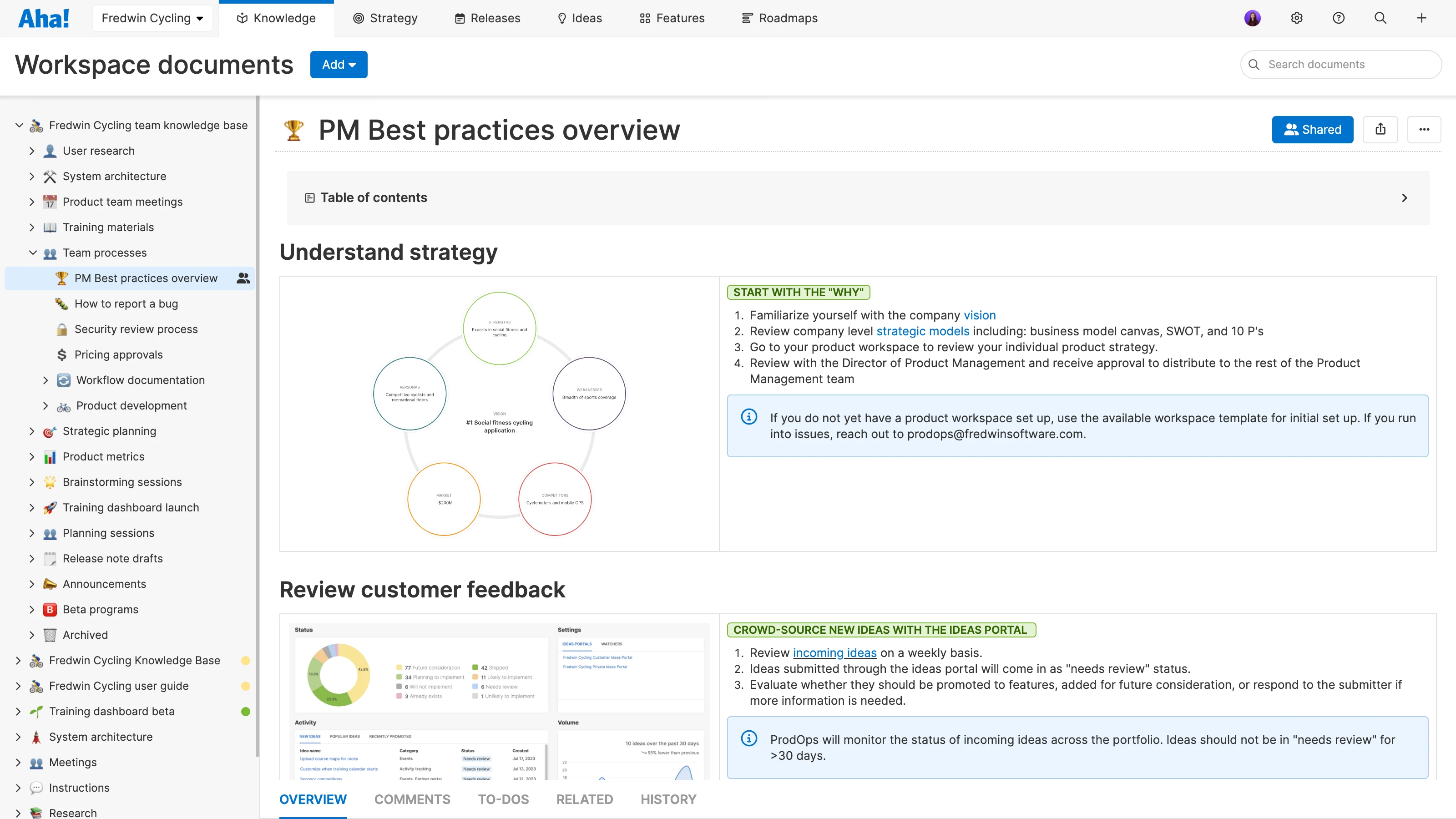How to adopt The Aha! Framework for product development
A tested and flexible way to build lovable products
Last updated: September 2025
The Aha! Framework for product development is the methodology we have used for more than a decade at Aha! See whether it could work for your team (plus get some adoption tips from ours!). |
The Aha! Framework is a flexible model for product development. It emphasizes a strategic approach to agile work — without the excessive ceremonies, nomenclature, and rules that bog down traditional agile methodologies. This level of flexibility makes our framework infinitely scalable and suitable for product teams of all sizes and maturities.
You likely have some awareness of The Aha! Framework already if you are reading this. And as you delve deeper into your knowledge of the framework, there are probably two questions you hope to get answers to now. Feel free to jump ahead for these insights:
But this entire guide will give you the overall background you need to better understand how to evaluate The Aha! Framework within the context of your team's unique needs. It also provides some best practices for incorporating the framework into your team's existing (or, in some cases, nonexistent) product development processes.
Remember that if you are an Aha! software user, our Customer Success team is here for you as you roll out any new product development process using the Frameworks functionality in Aha! Roadmaps. (This functionality supports The Aha! Framework as well as other common agile methodologies and custom approaches.) And if you are not yet an Aha! user, now is the perfect time to try out the complete software suite — free for 30 days.
How do I know if The Aha! Framework is right for my team?
The Aha! Framework maps to the stages that every product team goes through during the product development process. The framework's driving principles are:
A focus on building a Minimum Lovable Product
Iterative improvement
For each stage of the product development process, there are discrete activities within The Aha! Framework that likely mirror work you probably do already (even if informally). The activities are presented sequentially within the framework. But many occur frequently, and even concurrently, to support product teams that practice continuous deployment. Others occur at fixed intervals. You can also adjust the timing for these activities as needed.
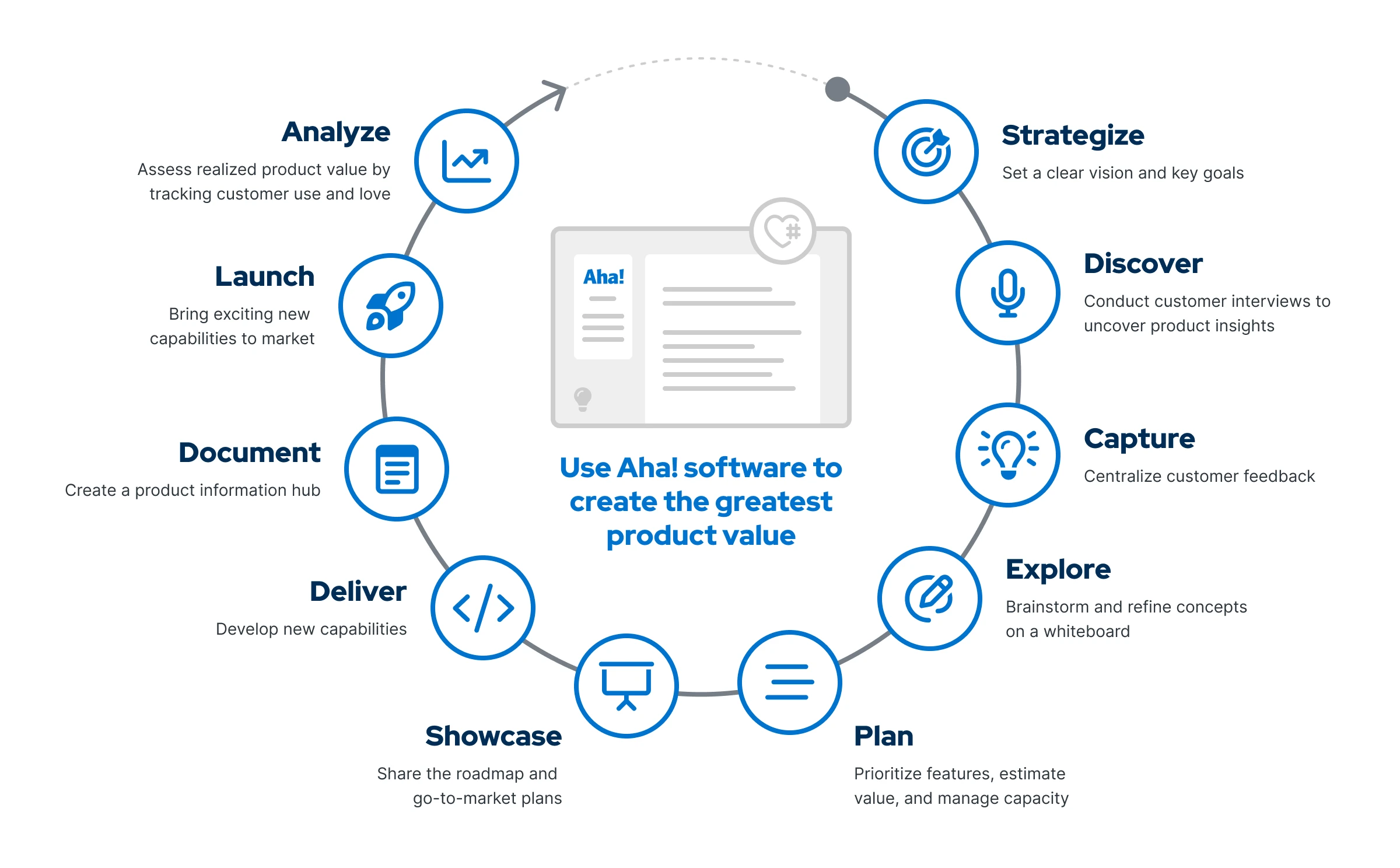
Learn more about the activities across each stage of The Aha! Framework.
For example, during the strategize stage of product development, product teams define the product vision, review market conditions, draft product goals, identify product initiatives, gather stakeholder feedback, and, finally, set the product strategy. These activities are helpful to undergo biannually, whereas activities during the capture stage (which focuses on collecting and reviewing customer feedback) should happen weekly — if not daily for some product teams.
Signs that The Aha! Framework could help your team
It is hard to be unbiased when answering this question — our experience has proven that the framework is suitable for any team that wants to focus on the essential inputs for delivering the most value. We know this because we have spent more than 10 years establishing and refining The Aha! Framework. We have also supported thousands of product teams by bringing these practices into existing product workflows, including teams from some of the best-known and most innovative companies.
But there are still some things to look out for when evaluating your approach. The Aha! Framework can benefit your team if:
Strategy is a buzzword | The team mostly focuses on detailed requirements instead of achieving higher-level goals. |
"How" trumps "why" | Teammates spend time talking about how work will get done — but not always why that work should be done or actually getting work done. |
Feedback is disjointed | You collect customer requests and feedback ad hoc, and these insights are not fully integrated into roadmap planning. |
The roadmap lacks cohesion | Your roadmap represents more of a collection of random features than a holistic vision of the future of your product. |
The loudest voices win | Feature prioritization is often guided by the loudest voice in the room, and there are no best practices for vetting or scoping features. This leads to inconsistencies. |
Ceremonies eat productivity | People are so wrapped up in the semantics of ceremonies and roles that it negatively impacts the team's velocity. |
Improvements are surface level | The team favors incrementalism as a quick way to show impact without deep thinking or exploration into the improvements customers truly need. |
Communication hinders progress | Stakeholders are often unaware of the latest product plans, which leaves cross-functional teams unaligned on a shared purpose. |
Launches are a scramble | Launches are always a scramble, with no repeatable processes and inconsistent messaging. |
The value is unclear | When the team delivers new functionality, it is not always clear how valuable that functionality will be to the business and to customers over the long term. |
Best practices for adopting The Aha! Framework for product development
Hopefully, you did not check off every one of the bullets above as "yes." (If you did, you have our sympathy ... and it is good you are looking for a better way forward.)
Many teams struggle with one or a few of these issues, but are generally able to produce and function — even if it feels like things are dragging along at times. Now, imagine how much more you could achieve with a proven approach to product development that removes unnecessary overhead and focuses the team on what is most essential.
Adopting a new way of working represents a meaningful investment from everyone in the organization. So you want to be sure to approach the change with intention and a plan for success. Here is our guidance for how to move forward with The Aha! Framework at your company:
1. Evaluate how you develop products today
Even if you feel like your team is working in chaos, there is some process you are following. As you attend regular product team meetings, jot down recurring themes that pop up: things like how folks are evaluating work in progress, common dependencies, and references to "what we did last time." These unique factors will help you identify what is going well and where you might need to invest more attention.
Then, block out some time on your calendar to document the known world of product development at your company. Take note of existing product development processes, including:
Strategic planning cadence
Customer feedback loops
Ideation approaches (whiteboarding, etc.)
Feature definition and prioritization
Roadmap planning
Internal communications
Release cadence
Agile development practices (sprints, etc.)
Go-to-market strategy
Common launch deliverables
Delivery metrics and KPIs
Related:
2. Map areas of opportunity with The Aha! Framework
If you are an Aha! software user, you can jump-start the process by using our expert templates. Start by creating a whiteboard and choosing The Aha! Framework template as a visual reference point. Then, add more templates to the whiteboard to guide the review process. (If you are not yet an Aha! user, you can do this in a more limited way with whatever writing tools your company uses.)

